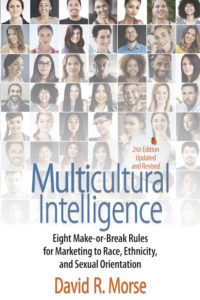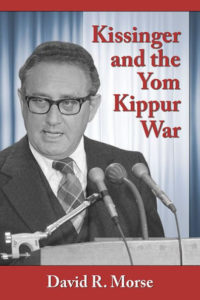Divided We Stand

Divided We Stand:
Racism in America from Jamestown to Trump is available at
ISBN-10: 1941688489
ISBN-13: 978-1941688489
© 2017 David R. Morse
For many people, the rise of white supremacy is a recent phenomenon, but for those who are deeply familiar with U.S. history, it is not new. Quite the contrary. In this new book, David R. Morse, details how the “whiteness” of America came about and how it has become more prevalent from time to time, beginning with the founding of Jamestown to the current administration of Donald Trump.
As various immigrant groups have come to the U.S., usually in response to a need for labor to work in agriculture and infrastructure building, the public and Congress have responded by harassment and limiting the numbers of immigrants who are welcome in the country. The pendulum has swung many times in the last 200 years, as Mexicans, Chinese, Italians, Irish, Jews, Eastern Europeans, and now Muslims have come to the U.S., fleeing violence or seeking economic opportunity.
The most well-known of the struggles are of African Americans who came to this country not of their own free will, but as slaves. From the Civil War to the Civil Rights movement, to Black Lives Matter, their attempts to achieve equal status in the United States is ongoing and well documented in this book and different than the stories of other people of color. Their early experiences with racial hatred, Jim Crow, and slurs about their character, work ethic, and intelligence colors their views of justice in the U.S. unlike immigrant groups who have often come willingly in hopes of a better life.
The book cites both primary and secondary sources to make a cogent argument that people of color or ethnicities that are different from the country’s white Anglo founders have always been viewed with suspicion that they are taking jobs from whites, bringing crime, or overloading public services. At the same time, these immigrant groups have contributed to economic growth and entrepreneurship and without them, the country’s economy would stagnate.
Along with individual chapters for specific ethnic groups, Morse also explores the implications of race and science and the new interest in using DNA to establish ethnicity. History of many of these ethnic groups shows that eventually most have been accepted and assimilated into American society, so that slogans like “No Irish need apply” disappear. In some ways, that assimilation history means that people forget about the how immigrant groups have often had to struggle for acceptance.
David R. Morse combines his love of history and deep knowledge about multicultural communities in both his professional and personal lives. His new book is sure to help students of U.S. history, political science, ethnic studies, and labor relations understand the many complex layers of discrimination and racism throughout U.S. history and foster an informed conversation as the nation continues to struggle with this divisive issue.
Watch the video summary of the book here:
You may be asking, “Why did a white guy write this book?” Well, I’m not a typical white guy. After all, my day job is all about race. I do market research, with a specialization in multicultural consumers. I often find myself behind the two-way mirror at a focus group facility, as a group of African Americans, Hispanics, Asian Americans, and often whites, are asked about how they feel about an advertising campaign or new product. This gives me a unique vantage point. I’m the unseen white guy, getting an insider’s glimpse into how today’s so-called minorities respond to marketing, and how that relates to their race. Importantly, I’ve come to realize how I have benefitted, and continue to benefit, from the privilege that we white men inherit.
As I sit from my vantage point behind the two-way mirror, I see so clearly that whites and nonwhites live in two different worlds. I hear so many African-American respondents talking about the ubiquity of racism. I listen to Hispanics talk about the rise in deportations, and how they, whether they are authorized to live in the United States or not, feel racialized by the stigma of “illegal aliens.” I watch as Asian Americans, some of whom have been here for generations, complain that someone complimented them on speaking English well. Whites, on the other hand, more often than not, will say that they are colorblind. They are the victims of reverse discrimination, many protest. While the phrase “some of my best friends are black” is today considered a racist gaffe, its corollary surfaces in other remarks. “I have lots of black friends,” I am frequently told. “Close friends?” I ask, often getting a nervous reaction. More often than not, a colleague from work or an acquaintance from the gym is the person being referred to.
Like many Americans, maybe most, I’m worried about the future of our divided country. My purpose in writing this book is to provide a resource for people like me, those of us who would like to see what President George H. W. Bush once called “a kinder and gentler America,” one truer to our aspirations and values, one reflecting the vision that our Founding Fathers likely had in mind.
My hope is that in reading this book, you will agree that change is needed. There needs to be more dialogue and exchange of ideas between whites and non-whites. We need to develop the empathy required to understand where the other side is coming from. We need to understand the how’s and why’s of how we got to where we are. It is my sincere hope that the book will provide a base so that together, we can deal with each other while, at the very least, having some knowledge of what makes us tick, racially, as a people. If the book succeeds in providing the smallest crack in the wall of what separates us, at least among some readers, I feel I will have at least a small contribution toward fixing a problem in drastic need of a solution.
Introduction Part 1 White Americans
1. The Anglo-Saxons
2. The Irish and Germans
3. The Italians and Jews
4. The Integration of White Folks
5. Cracks in the White Wall
Part 2 African Americans
6. Slavery and the Idea of the “Superior” Caucasian Race
7. Jim Crow and the Great Migration
8. From Civil Rights to Sister Souljah
9. The Beginning and End of “Post Racial” America
Part 3 Hispanic Americans
10. Conquests
11. Cheap Labor and Mob Violence
12. Double Standards
13. The Birth of the Illegal Immigrant
14. Immigration Reform in Theory; Deportation in Practice
Part 4 Asian Americans
15. Exotic Orientals and Chinese Immigrants
16. The Gentlemen’s Agreement with Japan
17. East Indians and Filipinos
18. From Aliens and Allies to Model Minority
Part 5 Race and Science
19. Early Racial Thinking, Social Darwinism and Eugenics
20. Modern Genetics and Anthropology Take Hold
21. The Rise of the Human Genome
22. Racial Classification and the U.S. Census
Part 6 Where Are We now? Where Are We Going?
23. A New Racial Divide?
24. Race, Economics and Society?
25. The Present, The Future References Bibliography
“Racism and racial stereotyping are still powerful forces that can divide Americans. David Morse’s timely, insightful, and lucid analysis tackles the root causes of the problems and offers hope for a more inclusive nation.”
–Min Zhou, Professor of Sociology and Asian American studies at UCLA
“Morse’s professional expertise, in multicultural marketing research, combined with his superb handling of scholarly literature make this book a readable and learned primer on the question of race in contemporary America.“
–Afshin Matin-Asgari, a professor of Middle East History, at California State University, Los Angeles
“David Morse is fearless as he ever so smartly peels back the layers of America’s conscious and unconscious biases against various population segments. His keen organization and thoughtful insights of each segment’s history, culture, and cultural influence is well documented which makes Divided We Stand a MUST READ for business leaders and society to help them understand segment differences, race and race relations in the “New America.”“
–Pepper Miller, author, Black STILL Matters in Marketing
“David Morse’s compelling book takes us on the journey to truly understanding the impact of diverse groups in this country’s history. We so urgently need to wrap our minds and souls around how we can come to peaceful understanding in and with respect which honors one another’s history and contribution to this great country.”
–Gwen Kelly, Veteran Multicultural Marketer and Thought Leader
“David Morse’s excellent new book, Divided We Stand, gives the lie to the idea that the United States is a post-racial society. He explores the roots of American racism to get at the reasons that race continues to have such a decisive impact on contemporary US culture and politics. As an expert in multicultural marketing, Morse has a unique perspective on the ways in which Americans of different backgrounds understand race and express their racial identities. This background enriches what is already an eminently readable and thoroughly researched study.”
–Sara Pugach, Professor of History, California State University, Los Angeles
“Wow! This book is a revelation. It is easy to read but persuasive, thoughtful though provocative, radical yet practical. Rational discussions of race are rare. Anyone who wants to understand this subject should look at these pages.“
–Frank H. Wu, Distinguished Professor, University of California Hastings College of the Law; Chair, Committee of 100
“Remembrance, David R. Morse holds in this long history of racism in America, can guide us toward a more hopeful future. Contemplate and act upon that conviction.“
–Gary Y. Okihiro, Columbia University, author of Third World Studies: Theorizing Liberation
“David R. Morse shines a harsh light on racism, and thereby reveals the contradictions of, the high-minded ideals of human equality and the oppressive practices of racism inherent to the American project. A journey through legal judgments, scientific developments, and economic trends, Divided We Stand illumines how we will either unify or fall.“
–Dr. Matthew W. Hughey, Associate Professor of Sociology, University of Connecticut; author of White Bound: Nationalists, Antiracists, and the Shared Meanings of Race
“Divided We Stand provides a critical account of the multicultural history of the United States and greatly contributes to our understanding of the endemicity of racism in American society.“
–Quaylan Allen, Ph.D., Assistant Professor, Chapman University, College of Educational Studies
“A lively writer and storyteller, David Morse provides a compelling and wide-reaching overview of race in U.S. history. In Divided We Stand, Morse combines a firm command of historical scholarship with his unique perspective as an expert in multicultural marketing. The result is a unique contribution to our understanding of race in America.“
–Christopher Endy, Professor of History, California State University, Los Angeles



